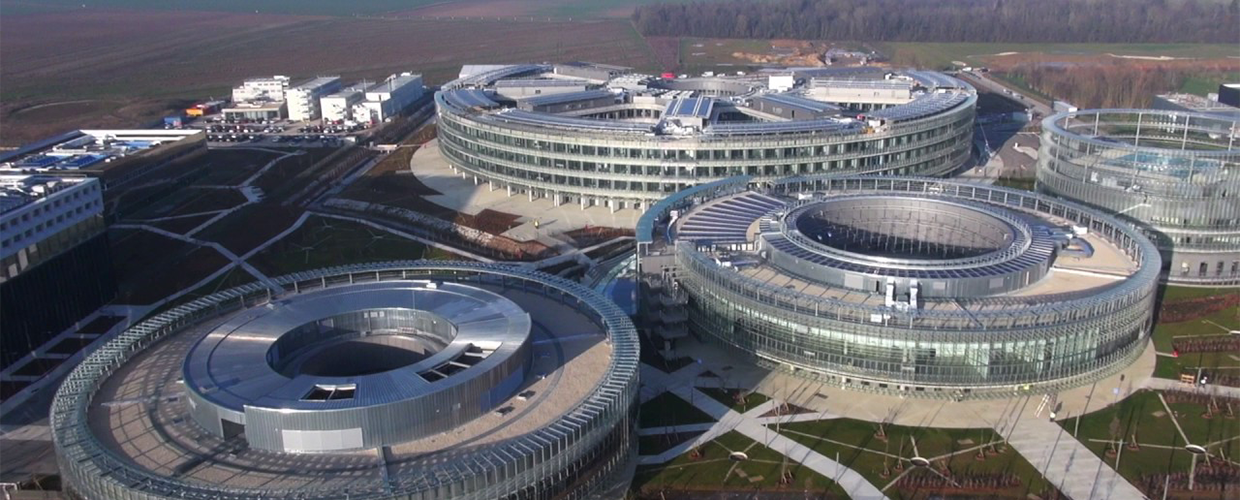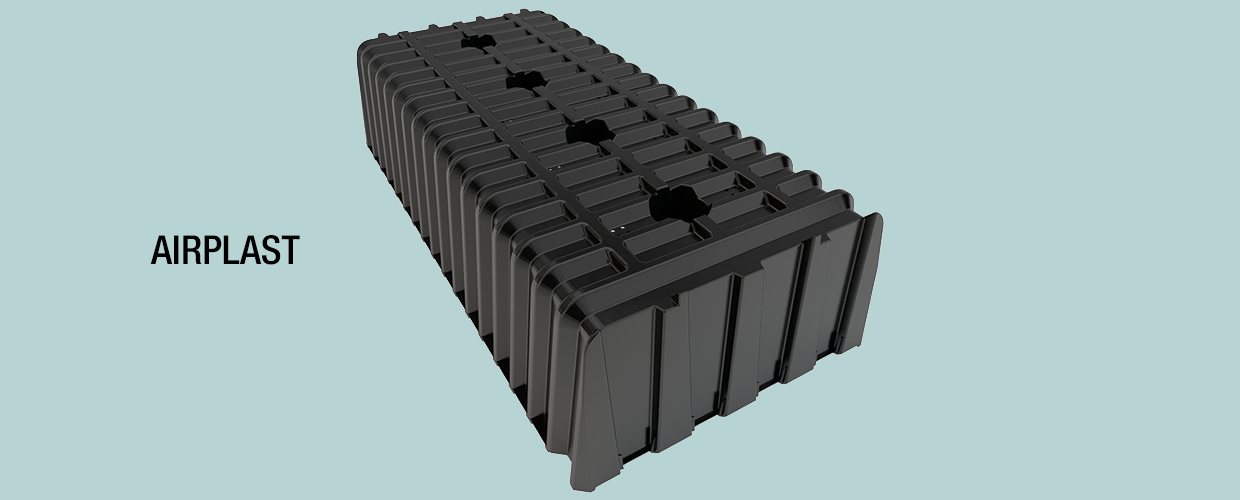How Airplast made EDF Lab Paris-Saclay more sustainable
by Nikola Tosic, 5 December 2018
The project
EDF Lab in Paris-Saclay is one of 9 research facilities owned by EDF Energy. EDF research budget is more than half a billion EUR annually. EFD Lab in Paris-Saclay is designed to host more than 1,000 researchers in the fields of engineering, data processing, energy efficiency, ICT, as well as other fields. The EDF Lab consists of four circular buildings: Iroice, Azur, Emeraude, and Opale – totaling 52,000 m2. EFD Lab is designed to be innovative in every aspect including sustainability. Project was managed by Besix.
Airplast benefits
Besix has chosen to use Geoplast Airplast to design the slabs in all four circular buildings. Airplast reduced the overall weight of the building improving its seismic resistance and sustainability. Sustainability was improved through the reduction of concrete use as Airplast creates air pockets within the slabs and by reduction of energy use for production and transport of concrete and overall building time. Slabs lightened by Airplast are more seismically resistant due to lower weight and higher flexibility.
Sustainability benefits for large projects
Substantially large projects such as the EDF Lab can experience great sustainability and performance benefits from applying Geoplast Slabs, Foundations, and Green Solutions. The bigger the surface area is the more benefits are offered by the ventilated foundations, lightened slabs, and green roofs. Our Slabs Solutions offer advantages both in terms of buildings’ seismic response and costs:
- Up to 20% reduction of the mass of the entire building,
- Up to 20% decrease of seismic acceleration and seismic force, and even up to 30% in case of tall buildings or areas with high seismic acceleration,
- Up to 25% reduction of concrete consumption,
- Up to 15% reduction of steel consumption,
- 15% savings in comparison to full slabs.
With less concrete used, the lower the CO2 emissions from concrete and related activities are.
Additionally green roofs can reach 87% reduction in heat gain and 37% reduction in heat loss.


